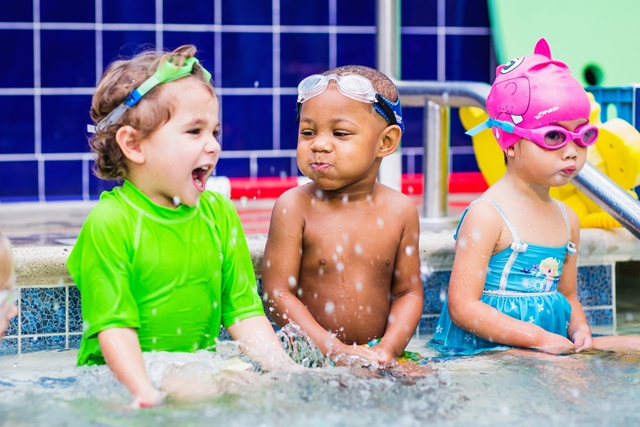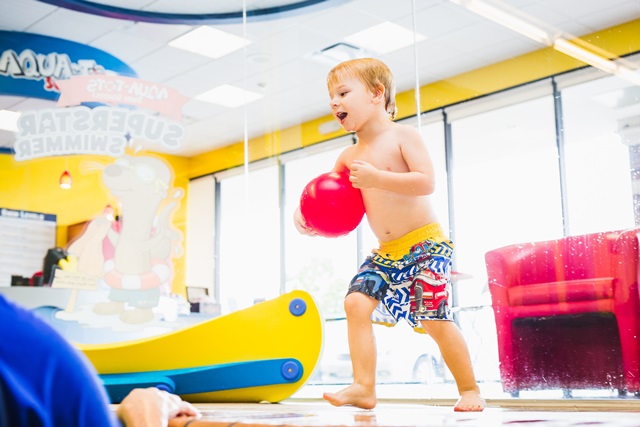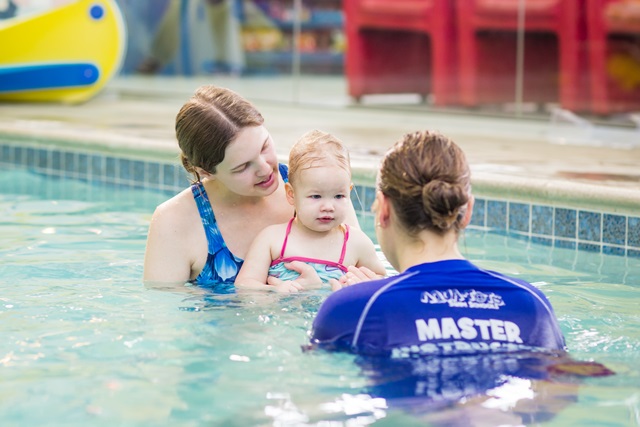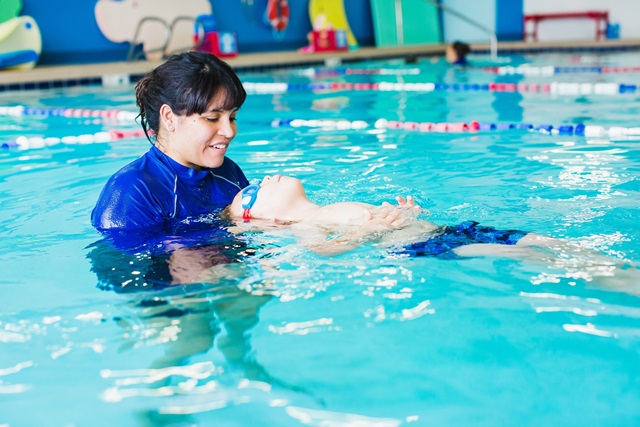
With the swimming season quickly approaching, the time to start thinking about swim safety is now. AZ Foothills interviewed Jamie Cartledge, the owner of Aqua Tots in Surprise and Peoria. Cartledge gave tips on water safety for adults and children, how to make sure your outdoor swimming pool is safe and swimming techniques for beginning swimmers.

Designated Watcher
The first tip Cartledge has when it comes to water safety is to always be with your child or have a specific watcher at all times. “Have a designated person watch the pool area with the children in it and if for some reason they have to leave they hand off the duties to someone else so that that person knows that it is their job duty.” Cartledge says it can also be helpful if the designated watcher wears a hat that they can then pass on to the next watcher.
When swimming at a resort pool, it is important to stay with your children because not all resort pools have trained lifeguards on hand. “By law, they don’t have to have lifeguards unless they have a slide or a lazy river,” Cartledge says. When children are swimming at waterparks, it is important to explain to your child the role of a lifeguard. Cartledge says to tell children “the lifeguards are there for your safety and if they ask you or tell you to do something [or not do something], you listen to them.”
Explaining pool safety to children can seem daunting; however, Cartledge says, “just simply tell them you don’t go in the pool unless Mom or Dad is there with you for your own safety As they get older, explain to them that these are safety rules.” When teaching children about water, you do not want them to fear water rather understand how to act around water. “You want to explain the why behind things, why you don’t rough house, why you don’t go into the pool by yourself,” Cartledge says.

A Safe Environment
When making sure that your pool is a safe environment for children, must have a locked fence surrounding the pool. “A pool fence is always a huge safety feature to have,” Cartledge says. Be sure to move all of the furniture away from the lock so that children cannot reach the latch and unlock the fence. “Make sure that your chairs and everything like that are inside the pool area or at least not accessible so that they can’t stand on the chair or open the pool gate.” Another tip on pool safety is to make sure that toys are not floating around in the pool. “I always tell parents make sure you don’t have toys floating around in the pool because the kids will be reaching for a toy because they want the ball in the pool to play with it and then they will accidentally fall in because they were reaching for the toy in the pool,” Cartledge says.

Classes
Children can begin to learn how to swim as early as four months old with parent-child swim classes offered at Aqua Tots. “The parents get in the water and at this point we are getting the child used to the water but then also we are informing the parents this is how you hold your child in the water, these are some of the safety techniques and this is how you can communicate to them,” Cartledge says.
As the child becomes older they can participate in group swim lessons. At Aqua Tots, Cartledge says, “by the time they are two and a half and three, they are on their own with an instructor in the water.” With the young age, one instructor will teach a class of four introductory lessons. “They are learning how to swim, how to swim on their back, they are learning when they touch the bottom of the pool they can push themselves back up and they are learning how to crawl out of a pool.” With more experience, the better the children’s swimming capabilities will be. “The more consistent you are taking active swim lessons and the more repetitive you are with the techniques that you learn, the quicker it will come,” says Cartledge.
If you find that your child has anxiety when it comes to being around water there are different ways you can resolve their worries. The first tip Cartledge provides is “working one-on-one with them and teaching them that water is not going to harm them, that if you fill your lungs with air you are going to float on top.” Another tip when helping children with severe water anxiety is to understand where their fear comes from. “The first step is definitely a one-on-one. Let’s get down to the root cause of the problem and then let’s talk about how we can overcome that,” says Cartledge.
Another important aspect of swimming is breathing. At Aqua Tots, they have specific breathing techniques for beginning swimmers. “The very first thing we learn in our parent-child class is we focus on bubbles because if a child does fall into the water we don’t want them to blow out all their air,” Cartledge says. When concerning a child falling in, Cartledge says, “let’s teach them if they fall in to hold their breath roll over on their back and them take a breath instead of blowing out all of their bubbles.” With these early lessons, children can be better prepared to swim.

Older Children and Adults
Aqua Tots also has classes for older adults who want to feel better in the water. “What we found is that there is a huge adult population that never had the opportunity to learn to swim and because of that they want to get their children in the water,” says Cartledge.
At Aqua Tots they teach children from four months old all the way to advance competitive swimming. The four competitive strokes are taught including the breast stroke, freestyle, back stroke and the butterfly. “We teach the side stroke and the back float for safety reasons, we teach them all four competitive strokes and them we teach them flip turns,” says Cartledge. For details on the classes offered at Aqua Tots, go to www.aqua-tots.com.